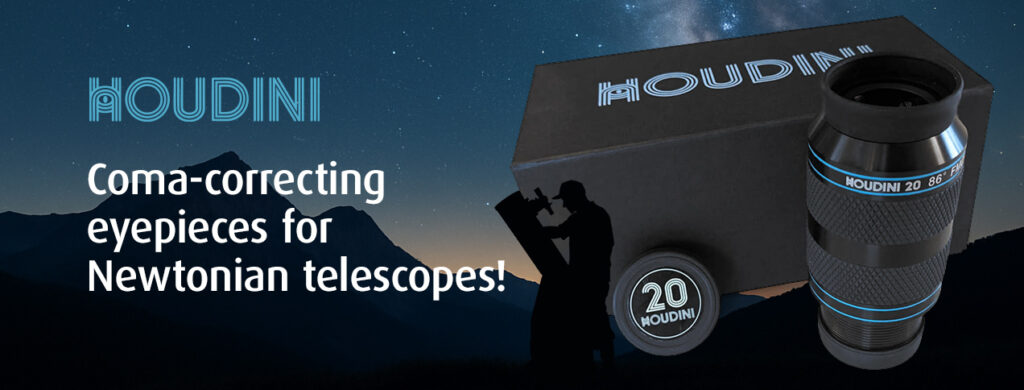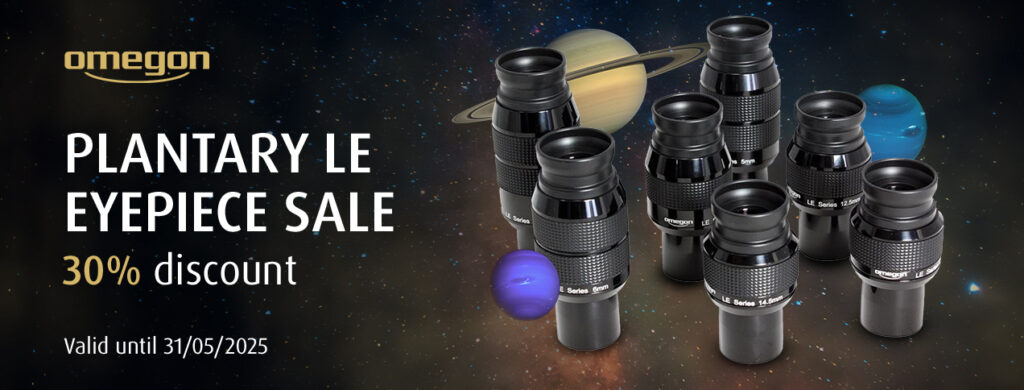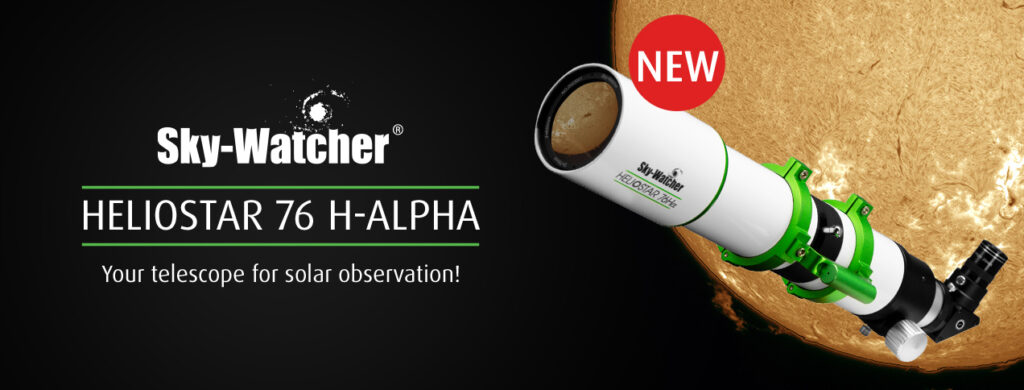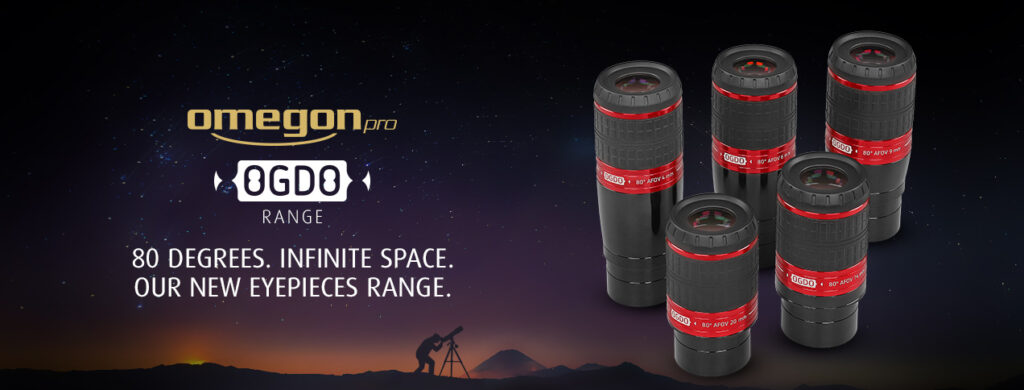
A starry night. You’re standing at your telescope and probably thinking: “If only I could see a little more…”
More field of view, better edge sharpness, simply more detail. Does that sound familiar?
Our Omegon product team has taken this wish to heart with the new OGDO eyepiece series. And the result truly speaks for itself. Even hobby astronomers with fast telescopes will be delighted.
What makes the OGDO series so special?
Wow! That’s usually the first thought when you look through the eyepiece. With a gigantic 80-degree apparent field of view, you’ll feel like you’re diving right into the night sky. The Orion Nebula? Suddenly appears in a whole new dimension and feels almost limitless.
And the best part: the stars stay sharp. The optics are optimized even for systems with a focal ratio down to around f/4.5, when using a coma corrector. Not many eyepieces can handle that. And you’ll immediately notice the difference compared to other products in this price range.
What’s the secret behind the astonishing contrast? It lies in the Lanthanum ED glass used, made by renowned Japanese manufacturer Ohara. Just take a look at Jupiter: its delicate cloud bands and subtle color variations suddenly stand out clearly. Truly impressive. Even faint deep-sky objects become a real experience.
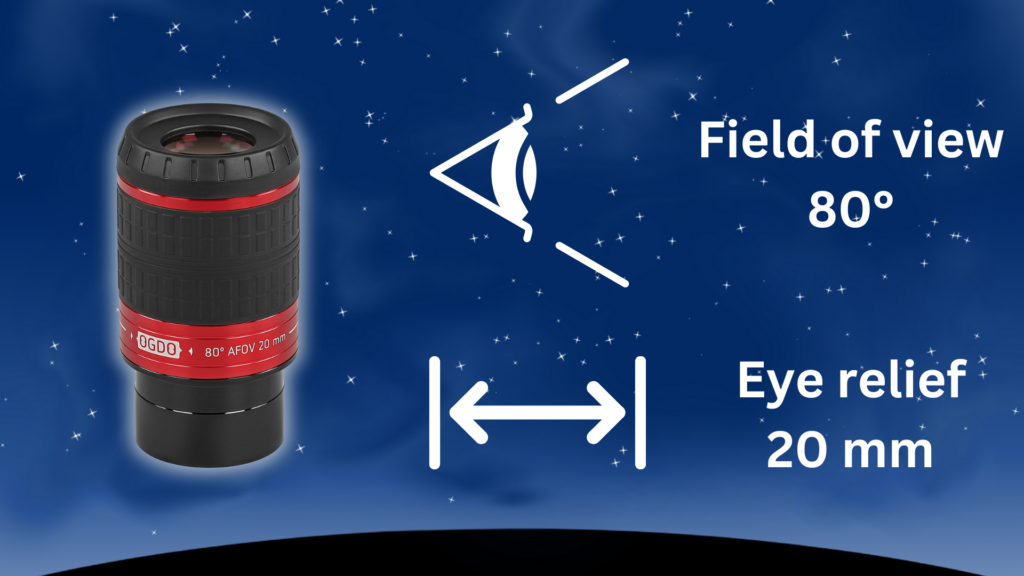
Do you wear glasses? No problem. With a generous 20 mm eye relief, you can finally observe comfortably without removing them. And you still enjoy the full field of view. This also applies to the short focal lengths of 4 mm and 6 mm!
Another detail we love: the waterproof and rubber-armored metal housing. Say goodbye to worries. The eyepieces can be safely stored in the included flannel pouch. The optics stay protected and always ready for action.
The right eyepiece for every observing situation
The OGDO family comes in five different focal lengths:
What more could you want? You’ll have the right eyepiece at your fingertips for any situation.
So how about taking a look into your eyepiece case right now and finding a spot for the OGDO?

